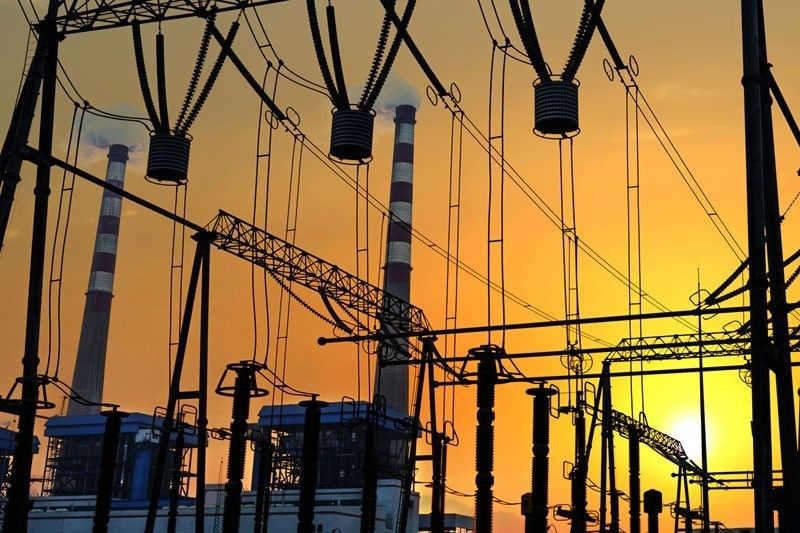Commentary: Brightening the dimming economic growth

Three reputable international organizations, namely the Asian Development Bank, International Monetary Fund and Fitch Ratings Inc., have downgraded their economic outlook for the Philippines for this year.
ADB revised its projections from 6.8 percent to 6.4 percent in 2018 and 6.9 percent to 6.7 percent in 2019. This represents the largest downward revisions to its growth forecast for this year, falling by 0.4 percentage points, followed by Malaysia by 0.3 points, Lao PDR, Myanmar and Vietnam by 0.2 points and Indonesia by 0.1 point.
Inflation rates in Southeast Asia are mostly stable, with the exception of the Philippines, where it more than doubled to 6.4 percent in the first eight months of this year. Due to elevated oil prices, food supply disruptions and a new tax reform program, the consumer confidence index remains negative.
This month, the IMF also adjusted its real GDP forecast to 6.5 percent in 2018, lower by 0.2 points from its July report and 6.7 percent in 2019. This downward trend is primarily due to rising inflation and overheating, higher oil prices, high credit growth, intensification of global trade tension, and the impact of higher U.S. interest rates and volatile capital flows on borrowing costs over the short term.
Fitch Ratings also predicts a decrease in real GDP growth from its previous estimate of 6.5 percent to 6.3 percent due to the country’s “sub-par” economic performance.
Generating more gains
Despite the sluggish growth, there are opportunities in specific sectors of the economy such as the power and manufacturing industries.
This investment-led growth in the power sector was recently discussed in an energy stakeholder’s forum entitled “Energy Outlook: Supplying Rising Demand at Lower Cost” hosted by consumer advocacy group CitizenWatch Philippines in partnership with Stratbase ADR Institute.
In the forum, Francis Saturnino C. Juan, president of the newly-minted Independent Electricity Market Operator of the Philippines, said increase in electricity prices usually coincide with thin supply margin. To address the thinning of energy supply and its reserves, there is a need to facilitate investments in new generation to meet the rapid growth in demand and promote competition at the retail level.
This is affirmed by Jose Alejandro, chairman of the Philippine Chamber of Commerce and Industry’s energy and infrastructure committee. While Philippine power rates are among the highest in the Southeast Asian region, this is mainly attributable to the absence of government subsidies, he said. He highlighted the role of investments and subsidies in bringing down the cost of power in the country in order to achieve inclusive economic growth.
Addressing energy woes
One of the reasons why the Philippines has the lowest level of net foreign direct investments among the ASEAN-6 member states is the high cost of electricity.
Mario Marasigan, director of the Department of Energy’s Electric Power Industry Management Bureau, said the Philippines has the second highest electricity rates in Southeast Asia, next only to Cambodia. Based on customer class, however, the Philippines tops the chart in residential electricity rates.
Sen. Sherwin Gatchalian, who gave the keynote, said he recognizes the problem and proposes several legislative measures to reduce electricity rates namely, The Energy Virtual One Stop Shop Act, Recoverable Systems Loss Cap Electricity Procurement Act and Murang Kuryente Act. These bills complement his main advocacies, which he calls “3 S,” by focusing on providing Stable and Sustainable power to ensure maximum consumer Savings.
If all four legislative measures are approved, a typical Filipino household consuming 200 kWh would approximately have a total savings of P1.1741 per kWh.
Bureaucratic red tape is the biggest turn-off to potential investors. To illustrate, the application process flow for a hydro power project, will take at least 1,340 days, requires 359 signatures distributed in 74 regulatory agencies and attached bureaus. There are 43 different contracts along with various certification, endorsements and licenses that must be obtained for a power plant to be deemed compliant.
To untie this Gordian knot, the Energy Virtual One Stop Shop Act now pending in both Houses of Congress will drastically cut the process and hopefully spark a surge in new power plant investments and the rise of a healthy energy ecosystem equipped with the most modern and efficient technologies.
Amidst rising inflation and price shocks, reliable and affordable energy can still be achieved through the cooperation of government and energy stakeholders in the creation and development of energy policies.
Despite the dimming economy, the future of the energy industry still looks bright as there is much room for investment opportunities which can ultimately boost the economy.
- Latest
























